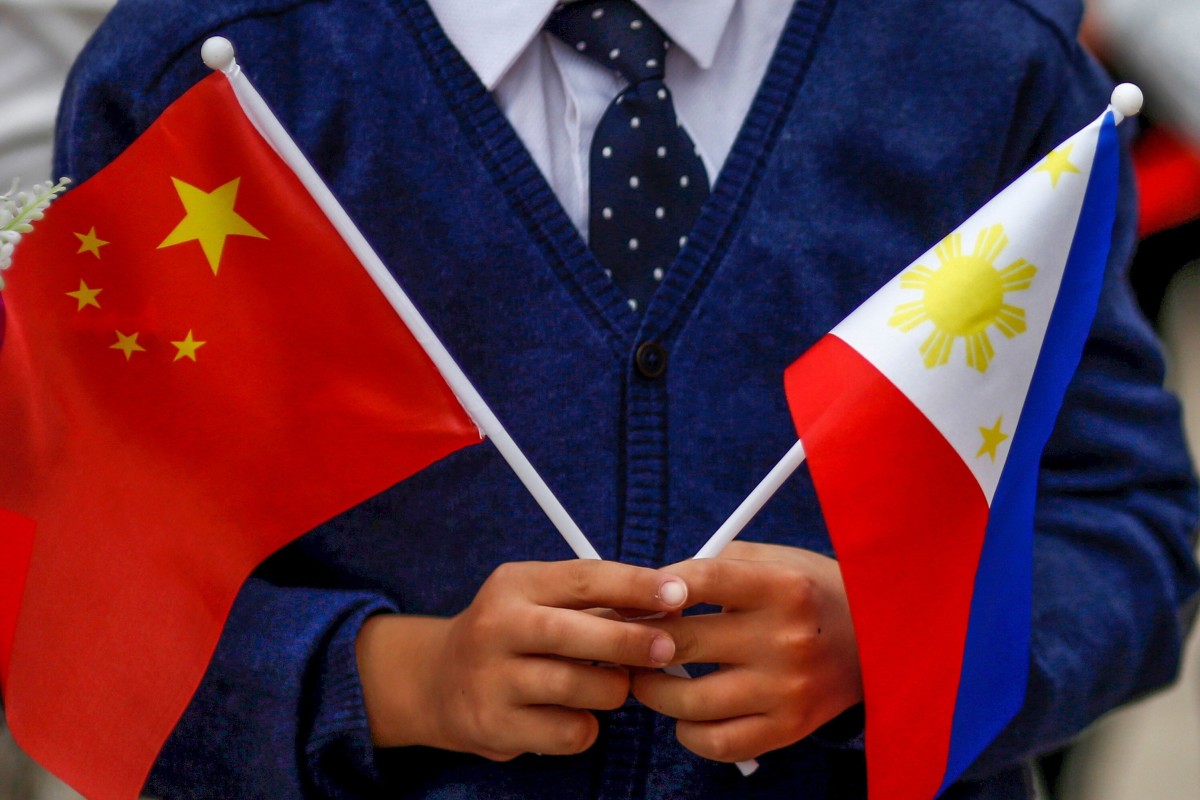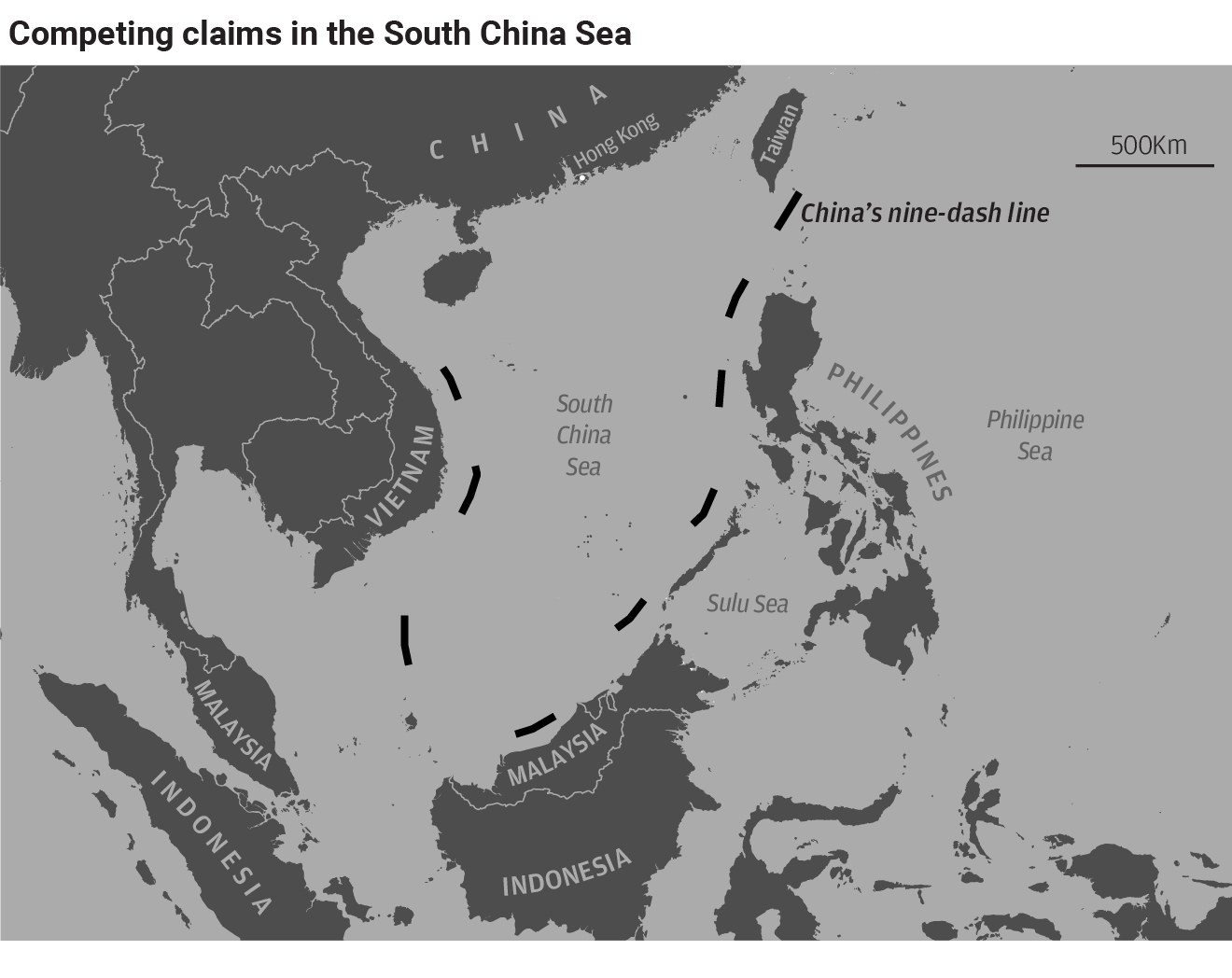
After years of cosier ties between Manila and Beijing, at the expense of the Philippines’ traditional alliance with the US, Duterte last month appeared to signal a retreat from his anti-Washington stance by reversing an earlier decision to scrap a key military agreement with the US in June.

Washington needs the support of Manila and other key partners in Southeast Asia in its efforts to push back on Beijing’s ambitions in the region. For China, maintaining ties with the Philippines is equally important amid its rising confrontation with the US.
It was a historic victory for the Philippines, which took the dispute to The Hague, but China has never accepted the decision. Beijing said the latest US policy statement on the issue “deliberately stokes territorial and maritime disputes”.
The Philippines backed the US stance, calling on China to accept the ruling. In his State of the Union address on Monday, Duterte argued the Philippines was “neither beholden nor a pawn to anyone” in the South China Sea, but also made clear the country was not prepared to go to war over its competing claims with Beijing.
“China is claiming it,” he said. “We are claiming it. China has the arms, we do not have the arms. So, it is simple as that. They are in possession of the property.”
In addition to their rivalry in the South China Sea, China and the US both have clear trade and investment interests in their relations with the Philippines.
The US and the Philippines have deep historical ties, with a mutual defence treaty dating back to 1951 and a military relationship which has continued since the closure in 1992 of the American naval base at Subic Bay and the Clark Air Base in Luzon.
On taking office in 2016, Duterte pivoted the Philippines towards Beijing, vowing to set aside the tribunal finding in exchange for Chinese investment. In October that year, he travelled to Beijing for a meeting with Xi and declared “America has lost now” and he had “realigned myself in your ideological flow”.
In February Duterte made his biggest move in distancing the Philippines from its historical ally when he announced the termination of the Visiting Forces Agreement.
It was an angry response to the revocation of a US visa for a former police chief who helped to lead Duterte’s bloody war on drugs, although the official reason was to diversify foreign relations.
The move – which US Defence Secretary Mark Esper described as “unfortunate” – complicated Washington’s efforts to push Beijing into following international law in the region.
Months later in June – after resistance from within his government – Duterte reversed course. Foreign Minister Teddy Locsin said the decision to reinstate the agreement was a response to “vast and swiftly changing circumstances of the world in a time of pandemic and heightened superpower tensions”.
Derek Grossman, senior defence analyst at the Washington-based think tank Rand Corporation, said Beijing was likely to be increasingly concerned that the Philippines could turn anew to the US to hedge against Chinese assertiveness – particularly as Manila had officially endorsed the US shift in its South China Sea policy.
“That said, Duterte’s latest statement – that China controls the South China Sea – seems to have been timed to throw cold water on the notion that the Philippines is once again happily conducting alliance relations with the US,” he said.
“As we know well, Duterte is extremely anti-American and has been seeking ways to diversify Filipino foreign and security policy away from over-reliance on the US.”
Public sentiment in the Philippines has long been pro-US, but Grossman said there had recently been a “further souring” of opinion on China, for reasons “ranging from suspicions about coronavirus, the South China Sea, illicit Chinese activities in the Philippines such as gambling and human trafficking allegations and potential distrust for Belt and Road projects in the Philippines.”
Jeffrey Ordaniel, assistant professor of international security at Tokyo International University, said Beijing was wary of any strengthening of treaty commitments between the US and the Philippines, noting that their mutual defence treaty covered the South China Sea.
“The Philippines’ South China Sea policy has been largely determined by Duterte’s parochial concerns, characterised by his deep-seated anti-US sentiments and favourable view of China,” he said.
“The weakening or strengthening of the US-Philippine alliance is obviously an important determinant of how far China could continue to push the envelope in the South China Sea.”
Ordaniel said Duterte was unlikely to change tack on his approach to China, but noted the strongman leader had less than two years left in office.
“The 2022 election will be pretty significant for China and the US. Many are expecting or hoping for the pendulum to swing back – for the Philippines to align itself again with America.”


No comments:
Post a Comment